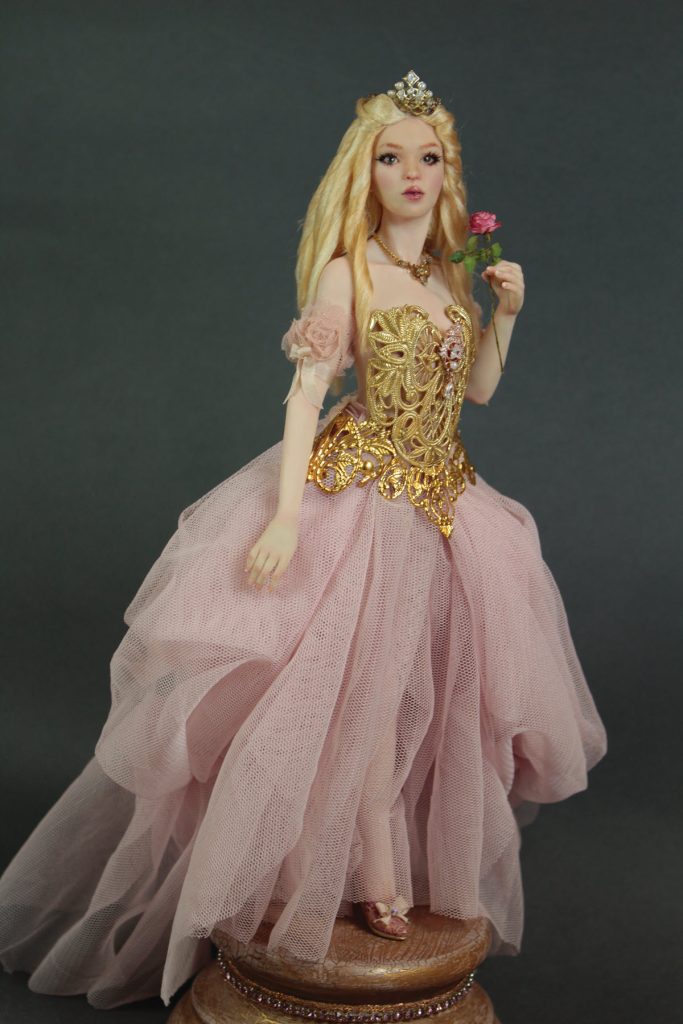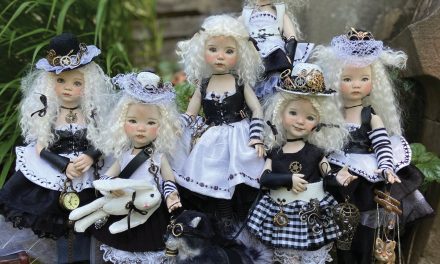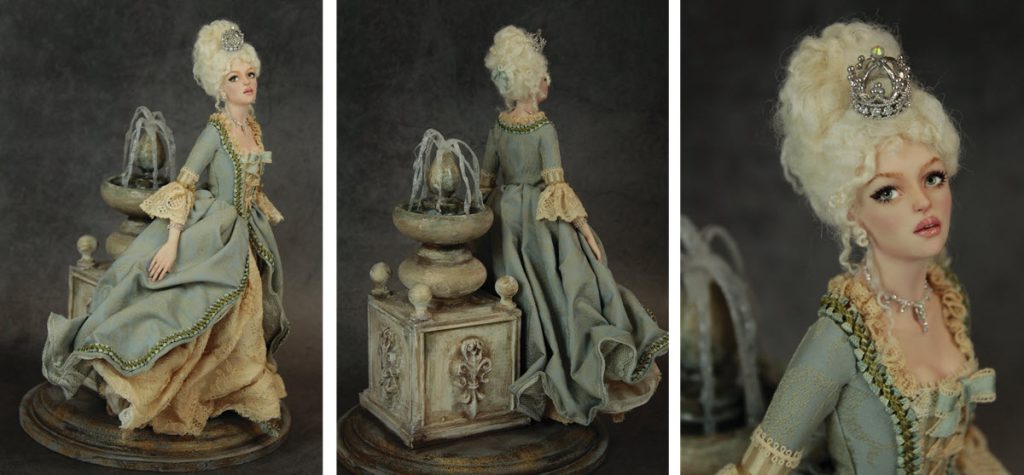
By Pam North
Prior to 2007, Italian dollmaker Patrizia Cozzo was on a much different career path, working first as a clerk in several shops and later as a comic letterer. “I was the person who handwrote the words into the balloons,” she said. “I always loved comics, and I was very happy to see the comic author’s work before everyone else.” When computer advancements made this job obsolete, Cozzo found a new way to leave her mark.
She had started using polymer clay at 15 years old to create simple jewelry for herself and her friends until she went to university. One day, while surfing the internet, she came across some lovely artist dolls by Patricia Rose and Nicole West. “I had never seen anything so beautiful,” she recalled. “I wanted to buy one but I couldn’t afford it, so I decided I had to try making my own.” As someone familiar with handling clay but lacking formal training in dollmaking, Cozzo sought learning opportunities to pair with her self-teaching. There was little information on the internet about dollmaking at the time, but she learned from Rose and a dollmaking forum. “My first doll was ugly, but I felt so proud for having completed her!” Cozzo said. She eventually met other dollmakers, including Eneida Rosa and Renata Jansen, with whom she could share ideas and techniques. “This was all before the new social media came in. In the last two years, however, I was lucky enough to attend two Mark Dennis workshops in Florence, and that was amazing. I’ve learned a lot from him and consider him my mentor. He was so willing to share his dollmaking knowledge and experience.”

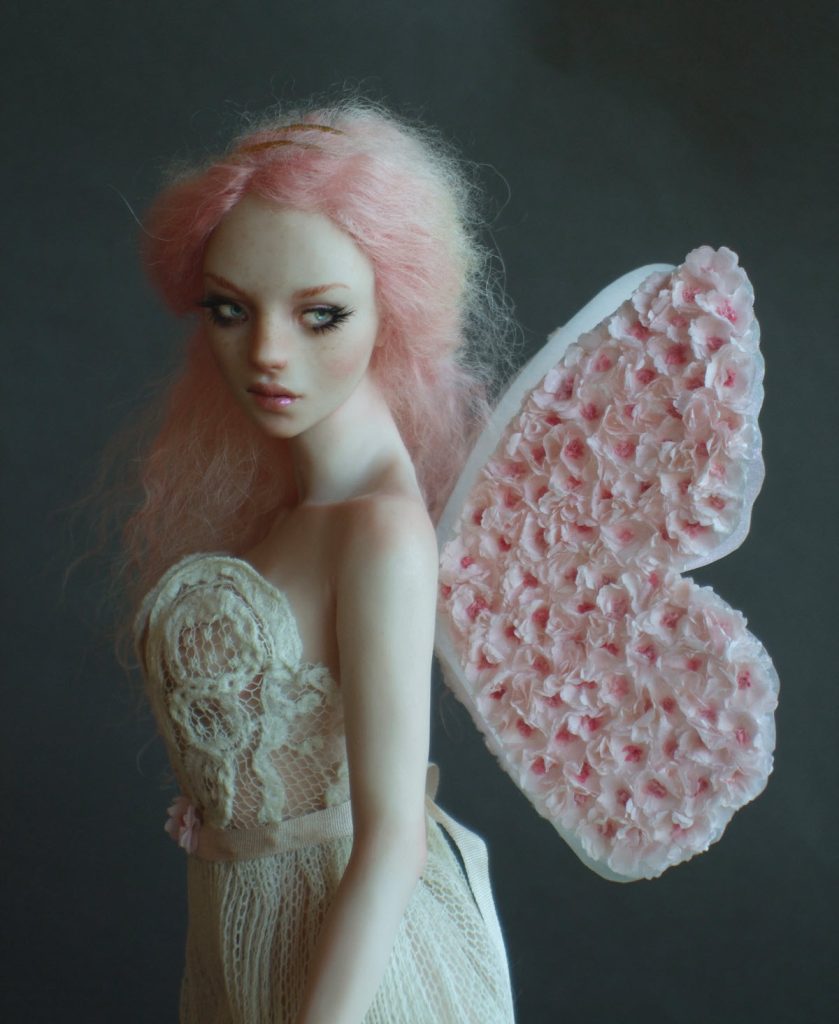
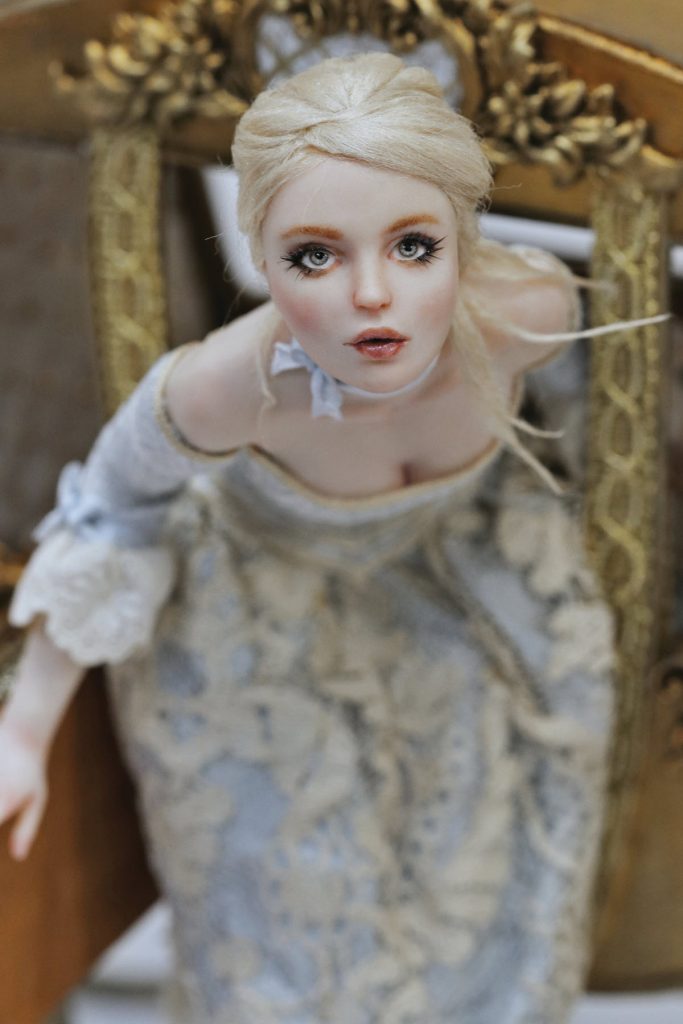
The artist’s current dollmaking focus is period ladies, fairies, mermaids, and fairy-tale characters. Sometimes, Cozzo makes accessories for her dolls — flowers, grapes, cake, or furniture such as rococo-style chairs and sofas. “I make miniature jewelry and also polymer clay or wood items like a carriage for a Cinderella. I love crafting everything by myself rather than buying premade things. I also like to dye my fabrics and furs to have different colors from those available in the market.”
Constantly evolving in her craft, Cozzo said, “I think that the decoration is the part where I can see my evolution most. My first figures were plain, and I couldn’t sew, so I was very limited. Now I try to give my figures some kind of story by making more complicated costumes to help them tell their stories. I think the engine that moves me is beauty. That is what makes me want to sculpt — to be part of that beauty, of the human body, of nature, of flowers. I have never reached my goal; I think I will die trying.”
Numerous materials and techniques are incorporated into Cozzo’s dollmaking process. She said, “I sculpt the figures in polymer clay (ProSculpt or Living Doll), and then I use anything I can to reach the appearance that I envision. I use the quilling technique for my art nouveau-inspired dolls, I carve wood, and I use Nuno felting (bonding loose fibers into sheer fabric) for some fairy dresses. In the end, a dollmaker needs to be a sculptor, a stylist, a hairdresser — a little bit of everything, and probably that is what makes this craft so good for me, as I easily get bored and this is never boring! I use the finest materials I can find, such as the softer wool or viscose fibers, silk, Miyuki Japanese beads for embroidering, and Swarovski crystals for the jewelry. When I use laces, I use ancient ones. Luckily, my country has some great affordable antiquities, so I can find some really beautiful pieces of this old wearable art.”
Cozzo especially enjoys making her dolls’ faces. “Sculpting in general is my favorite part. Eyes and hands are the most challenging: hands because I hate making those, and eyes because I cannot see as clearly as I did when I was younger. Making eyes as tiny as a 2-millimeter iris has become difficult. My greatest satisfaction comes from my collectors. I have a few who are very dear to my heart because they have always supported me and always have nice words to say about my work; I can call them friends at this point. I’m just so very grateful to be doing what I love!”
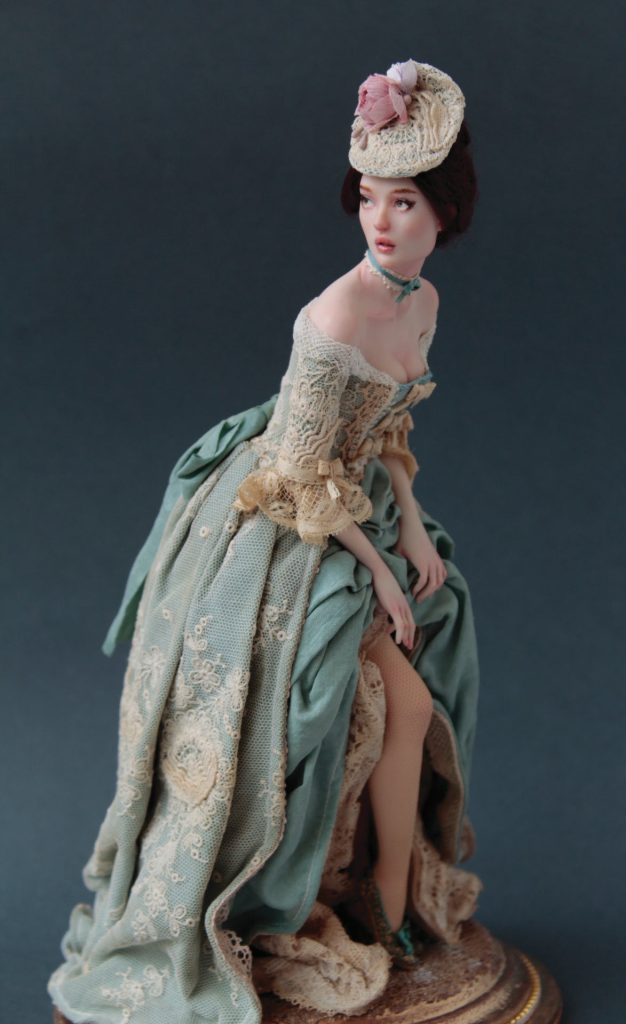
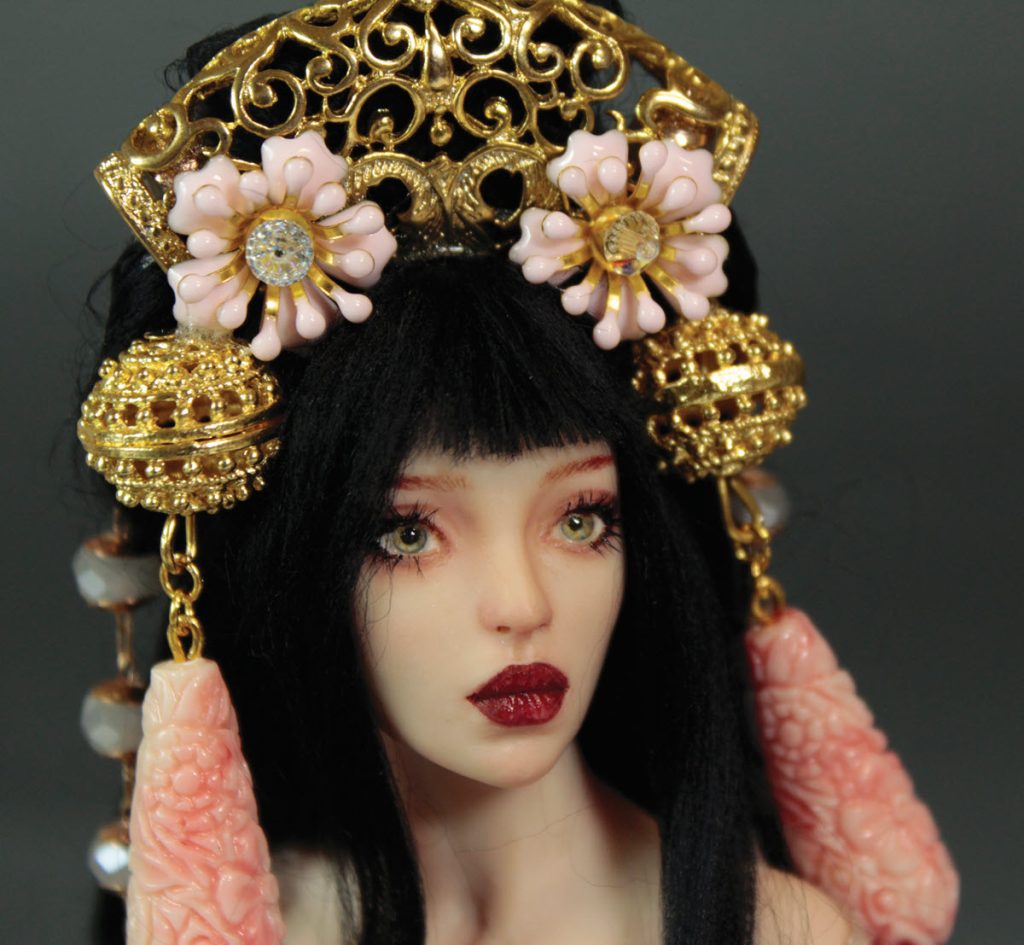
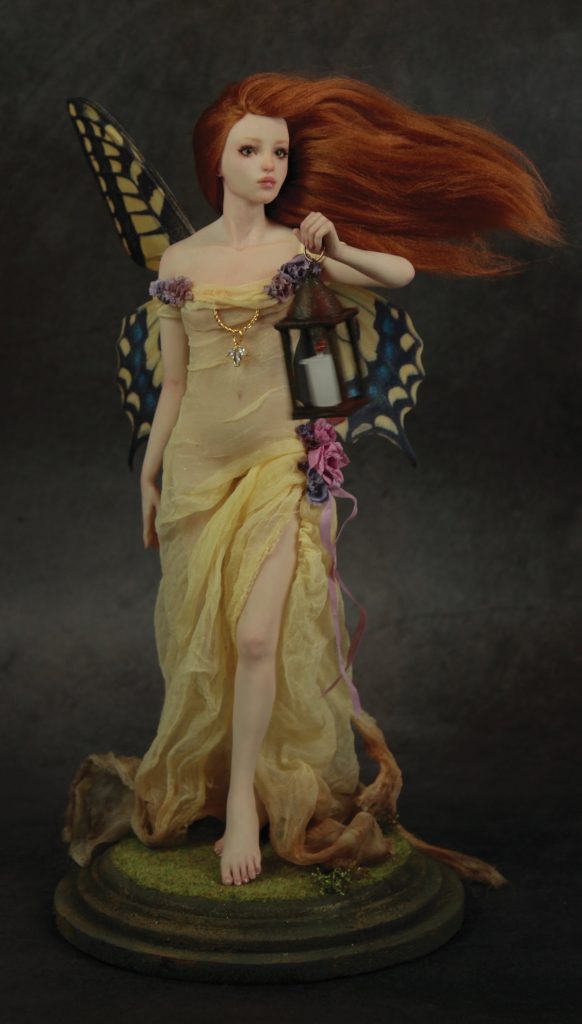
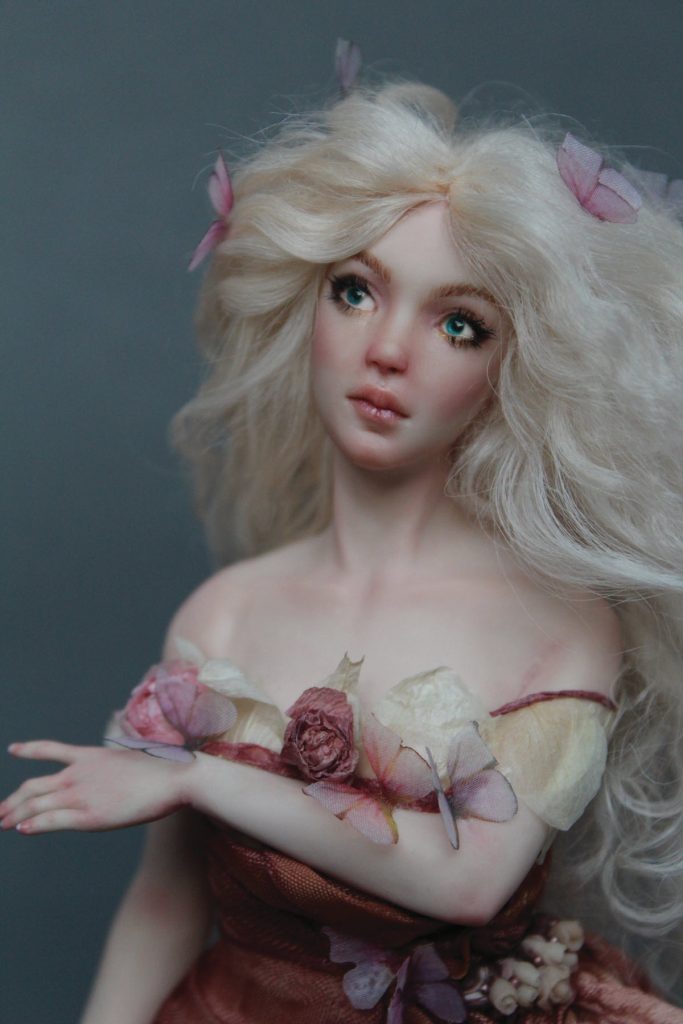
Inspiration for her can hit at any point. “I don’t search for it; it just comes, whether from a book I’m reading, a fabric, music, or a walk through a museum or city. It can come from virtually anything. There are times when my Muse is silent and I have to surf the internet to light it again, but generally, it’s more overwhelming than silent.”
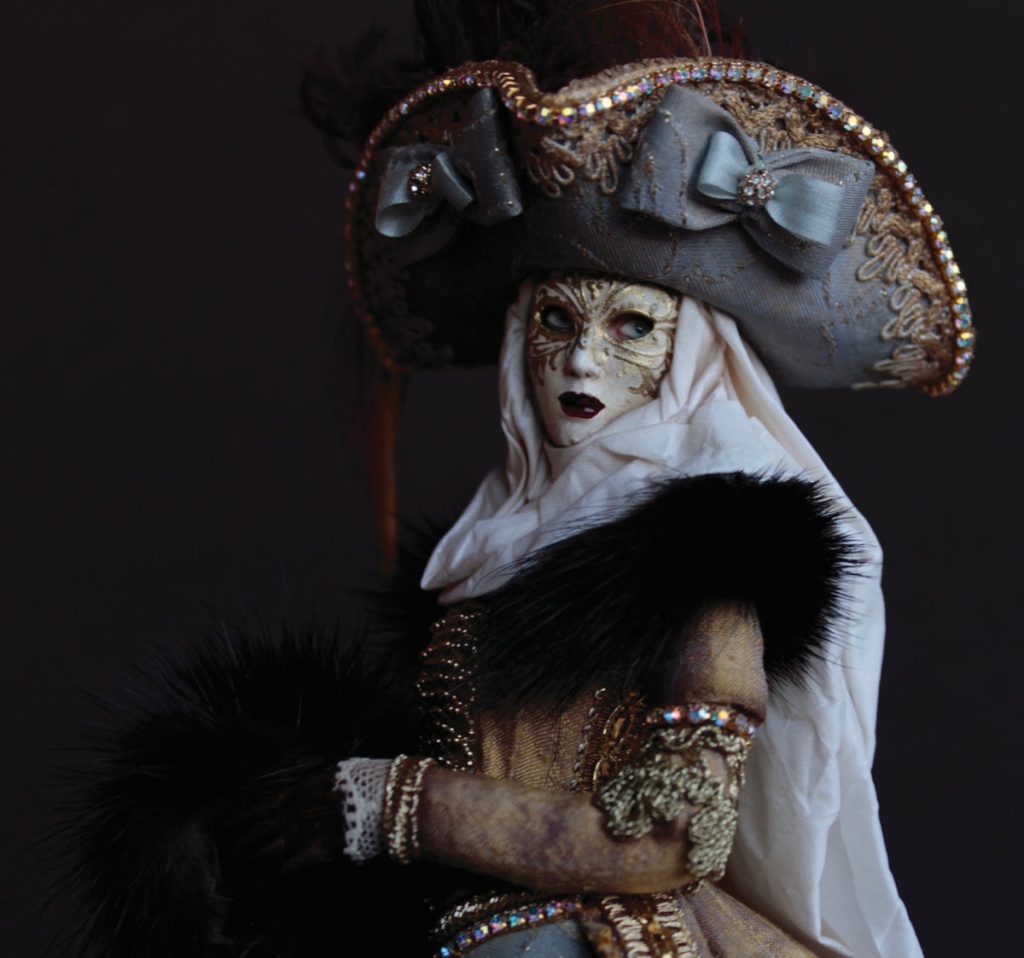
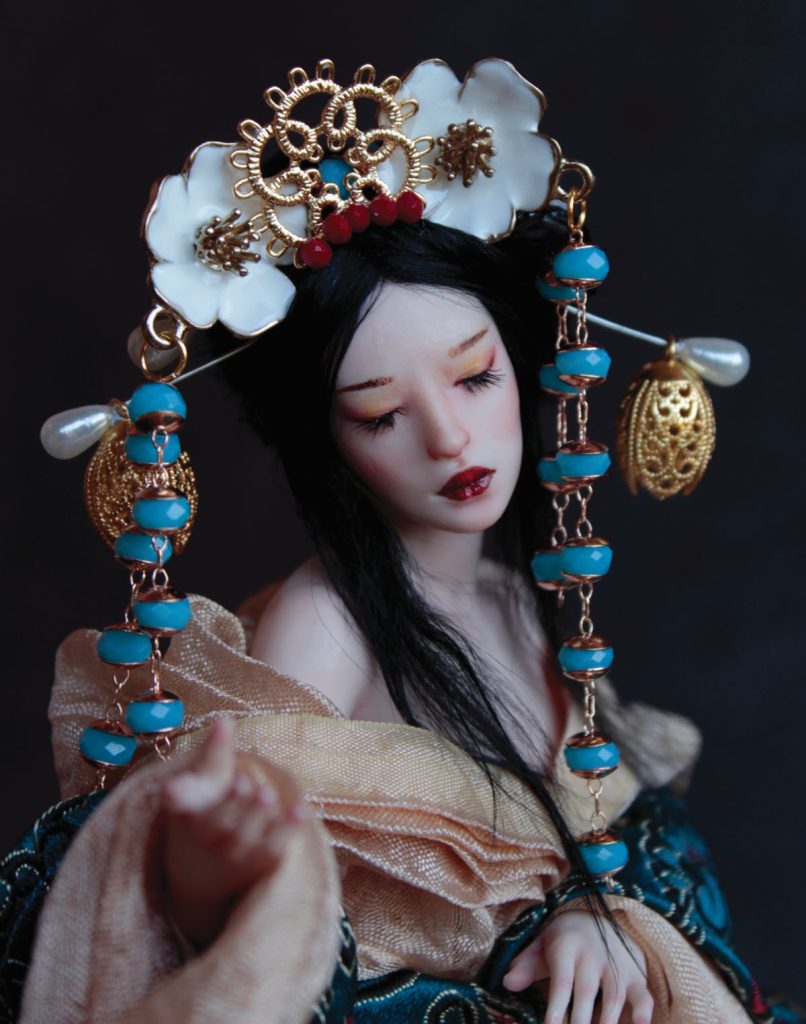
For a long time, Cozzo toiled away in her kitchen or living room and would try to hide the mess when she had company over for dinner. Having since moved into a new house, she now has a spacious room with a large worktable, a dedicated oven, lots of light, and a big wardrobe where she stores all of her materials. “It’s not fancy, since my husband and I used all the leftover furniture coming from our old house, but it’s a space that I love anyway,” she said. Cozzo sells her products primarily at doll shows, both in Italy and abroad, as well as through direct contact by mail or through social media. She also conducts workshops to teach others and said, “If there is a group of people willing to learn, I am more than happy to travel and teach my methods.”
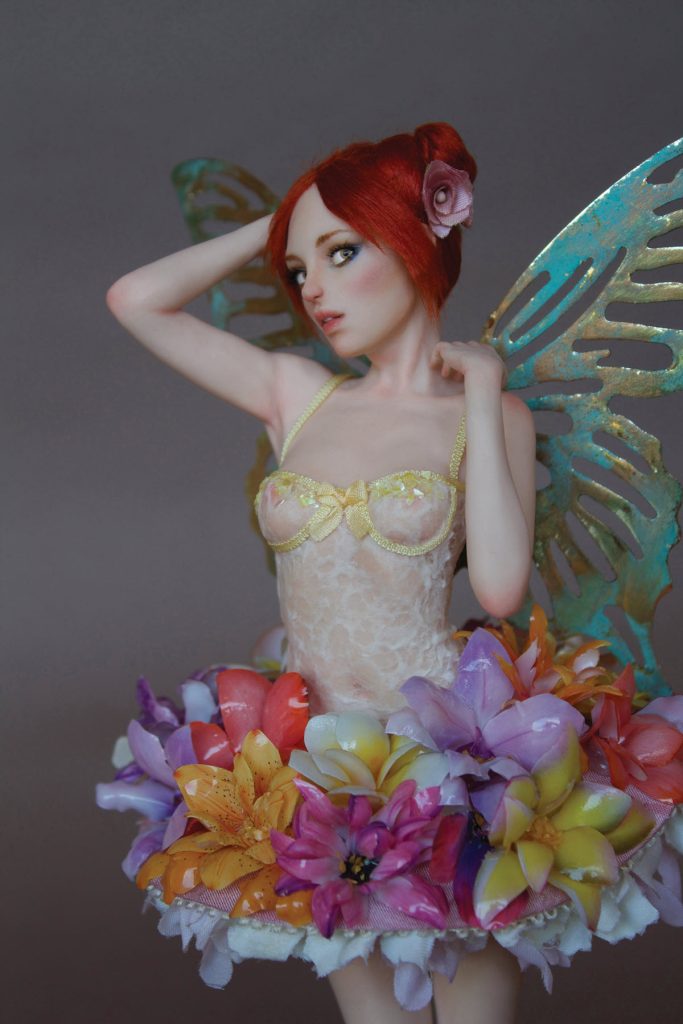
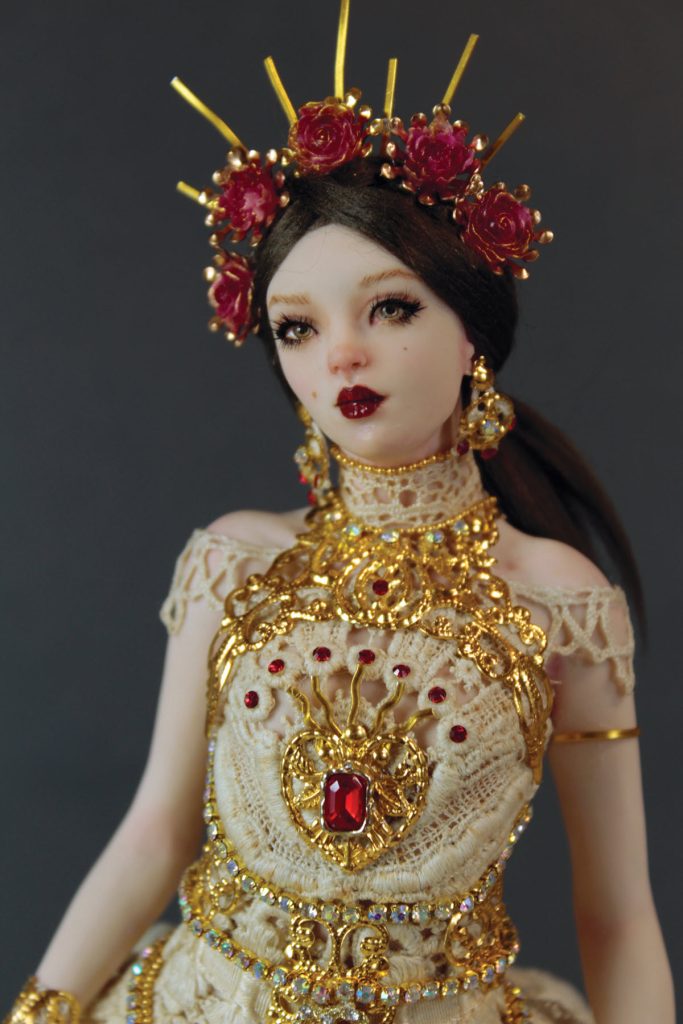
Her outlook regarding the future of artist-made collectibles is quite positive: “Art always has been a part of human beings. Perhaps their perceptions will change and evolve like they always have, but art is a reflection of humanity, and I think humanity cannot be parted from its reflection. While I do think collectors are becoming fewer in number, I feel that the ones who are still there are more supportive than ever. At least, this is what is happening to me — fewer collectors but those who are still there are more interested and are requesting new pieces.”
Cozzo’s artistic plans include experimenting with porcelain and ball-jointed dolls. She also would like to try making dollhouse-scale miniatures. “My biggest dream would be building a miniature French castle and filling it with costumed dolls!”
Patrizia Cozzo Art Dolls
